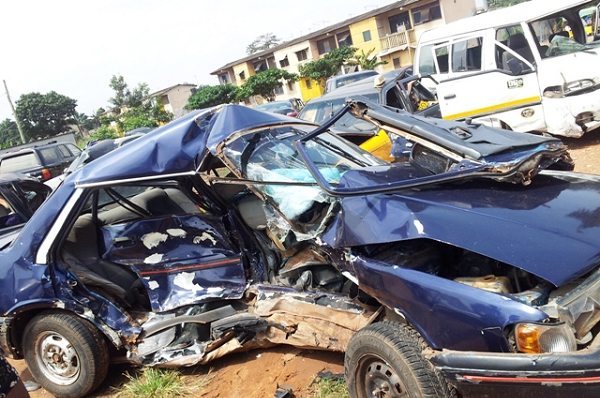Road accidents, addressing risk factors
Road accidents are a global pandemic affecting thousands of lives, and impact economic growth negatively in the region of three per cent of GDP, and thus is a national security and public safety threat.
The World Health Organisation (WHO) estimates that approximately 1.3 million people die each year through road accidents worldwide.
About 93 per cent of world fatalities on roads occur in low and middle income countries. UN Resolution A/RES/74/299 targets to reduce global deaths and injuries from road accidents to 50 per cent by the year 2030.
Addressing the risk factors is key in solving the problem.
Speeding
Increase in average speed is directly related, both to the likelihood of a crash occurring and severity of the consequences.
For instance, a percentage increase in mean speed produces a four per cent and three per cent increase in fatal crash risk and serious crash risk respectively.
Again, death risk for pedestrians, hit by car fronts increases rapidly, 4.5 times from 50 km/h to 65 km/h. In car-to-car side impacts of the fatality, risk for passengers is 85 per cent at 65 km/h.
Introducing speed limitation devices and speed control measures in vehicles and on roads is critical for controlling speeding.
Alcohol/psychoactive substances
In the case of drink-driving, risk of accident occurring starts from low level of blood alcohol concentration (BAC) and increases significantly when a driver’s BAC is ≥ 0.04 g/dl.
In the case of drug-driving, the risk of accident increases to differing degrees depending on the psychoactive drug used.
Public education, awareness creation and campaigns are needed for attitudinal change in drivers to address this risk.
Distraction through mobile phones is a growing concern for road safety. Drivers using mobile phones are approximately four times more likely to be involved in a crash than drivers not using mobile phone.
Using a phone while driving slows reaction times (braking reaction time, reaction to traffic signals), difficulty to keep in the correct lane, and keep the correct following distances.
Law enforcement and public education can help to address such risk.
Unsafe road infrastructure
The design of roads has a considerable impact on their safety. Ideally, roads are designed with the safety of all road users in mind by ensuring that adequate facilities for pedestrians, cyclists and motorcyclists are available.
Measures such as footpaths, cycling lanes, safe crossing points and other traffic calming measures are critical to reduce the risk of injury among road users.
Standardised roads designed with the safety of users in mind are inevitable.
Unsafe vehicles
Safe vehicles play a critical role in averting crashes and reducing the likelihood of serious injury. UN regulations on vehicle safety help to save lives when applied.
Regulations such as electronic stability control to prevent over-steering, airbags and seat-belts fitted in all vehicles are necessary. The absence of these basic standards increases the risk of traffic injuries to passengers and pedestrians.
The Driver Vehicle and Licensing Authority (DVLA) estimates that 90 per cent of vehicles in Ghana are indeed not road worthy.
Vehicle inspection is critical to eliminate this.
Post-crash care
Delays in detecting and providing care for accident victims increase the severity of injuries. Care of injuries after crash has occurred is extremely time-sensitive.
We need improvement in post-crash care to ensure access to timely pre-hospital care, and improving the quality of both hospital and hospital care, through specialist training programmes, emergency medical care, fire response, etc.
Traffic laws
Road traffic laws are very important to address the problem of road crashes.
Traffic laws on drink-driving, seat-belt wearing, speed limits, helmets, and child restraints are critical to bring about the expected reduction in road traffic fatalities and injuries related to specific behaviours.
Effective enforcement includes establishing, regularly updating, and enforcing laws at the national, municipal, and local levels.
Helmets, seat-belts, child restraints
Using the correct helmet can lead to a 42 per cent reduction in the risk of fatal injuries and a 69 per cent reduction in the risk of head injuries.
Wearing a seat-belt reduces the risk of death among drivers and front seat occupants by 45 – 50 per cebt, risk of death and serious injuries among rear seat occupants by 25 per cent. The use of child restraints can lead to a 60 per cent reduction in deaths.
To conclude, adopting the Safe System approach to road safety will help address the problem. This focuses on safe roads and roadsides, safe speeds, safe vehicles, and safe road users.
Responsibility lies with the Ministry of Roads and Transport, Motor Traffic and Transport Department (MTTD) of the Ghana Police Service, DVLA, National Road Safety Authority, National Ambulance Services and driver unions to implement this approach.
The writer is with Security & Conflict Management Bureau. E-mail: emmanuelfelixmantey@gmail.com



